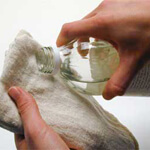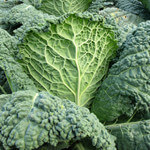 It would be difficult to find a household in the United States that does not contain at least one bottle of vinegar. Indeed, this strong-tasting liquid, which comes in many varieties but is primarily made from acetic acid and water, has been considered an essential ingredient in food preparation for centuries. Aside from being a condiment, it was used to pickle vegetables, make vinaigrette and other salad dressings, and flavor sauces such as ketchup, mustard, and mayonnaise. It was even used as an ingredient in certain beverages such as posca, a sour wine that was popular in Ancient Greece and Rome.
It would be difficult to find a household in the United States that does not contain at least one bottle of vinegar. Indeed, this strong-tasting liquid, which comes in many varieties but is primarily made from acetic acid and water, has been considered an essential ingredient in food preparation for centuries. Aside from being a condiment, it was used to pickle vegetables, make vinaigrette and other salad dressings, and flavor sauces such as ketchup, mustard, and mayonnaise. It was even used as an ingredient in certain beverages such as posca, a sour wine that was popular in Ancient Greece and Rome.
Despite its popularity in food preparation, however, vinegar was revered first and foremost as a cleaning agent. In fact, before the advent of chemical cleaning products, vinegar – which usually contains at least four percent acidity, and is a proven antibacterial, antifungal, antiviral, and antimicrobial – was one of Europe’s cheapest and most effective household cleaners. It still is cheap and effective, of course, and remains an excellent natural alternative to the toxic cleaning products found in most supermarkets.
Five Household Uses for Vinegar
Removes bacteria from surfaces – Due to its proven antibacterial properties, vinegar can make short work out of most household bacteria. Simply pour some vinegar (white vinegar is the most popular type, though any vinegar will do) onto a cloth or sponge and apply it to the affected surface. Dirty cloths and sponges can be cleaned by soaking them overnight in a mixture of vinegar and water.
Removes and deodorizes greasy residues – Vinegar can remove grease with the same effectiveness with which it removes bacteria. As before, apply some vinegar onto a cloth or sponge and apply it to the greasy surface. Since vinegar is both a degreaser and deodorizer, it will leave your stoves and cabinets smelling fresh as well as clean and residue-free.
Cleans the dishwasher – Don’t want to get down on your hands and knees to clean the dishwasher manually? Simply pour a cup of vinegar into the bottom of the dishwasher and run it on empty. The cycle will help remove any build-up in the interior. This technique is especially beneficial for those of us who have “hard water” (water that has a high mineral content, resulting in swifter mineral deposits inside our appliances).
Cleans windows – A sponge containing one part vinegar and one part water is all you need to keep windows clean. Please note, however, that cleaning windows for the first time using vinegar might leave behind streaks of chemical residue from previous cleaners. Scrubbing these unsightly marks with undiluted vinegar will help remove them.
Unclogs drains – Vinegar can be used with baking soda to unclog drains with mild block-ups. To do so, pour a pot of boiling water down the drain followed by half a cup of baking soda. This initial step will loosen any grimy sludge lingering at the bottom. Then, pour a mixture of one cup vinegar and one cup boiling water down the drain. The vinegar (the acid) will react with the baking soda (the base) in the water (the solvent), creating a minor explosion that helps dislodge stubborn waste. It’s a good idea to cover the drain opening during this reaction period, and to flush out the drain with another pot of boiling water at the end to remove any lingering residue.






